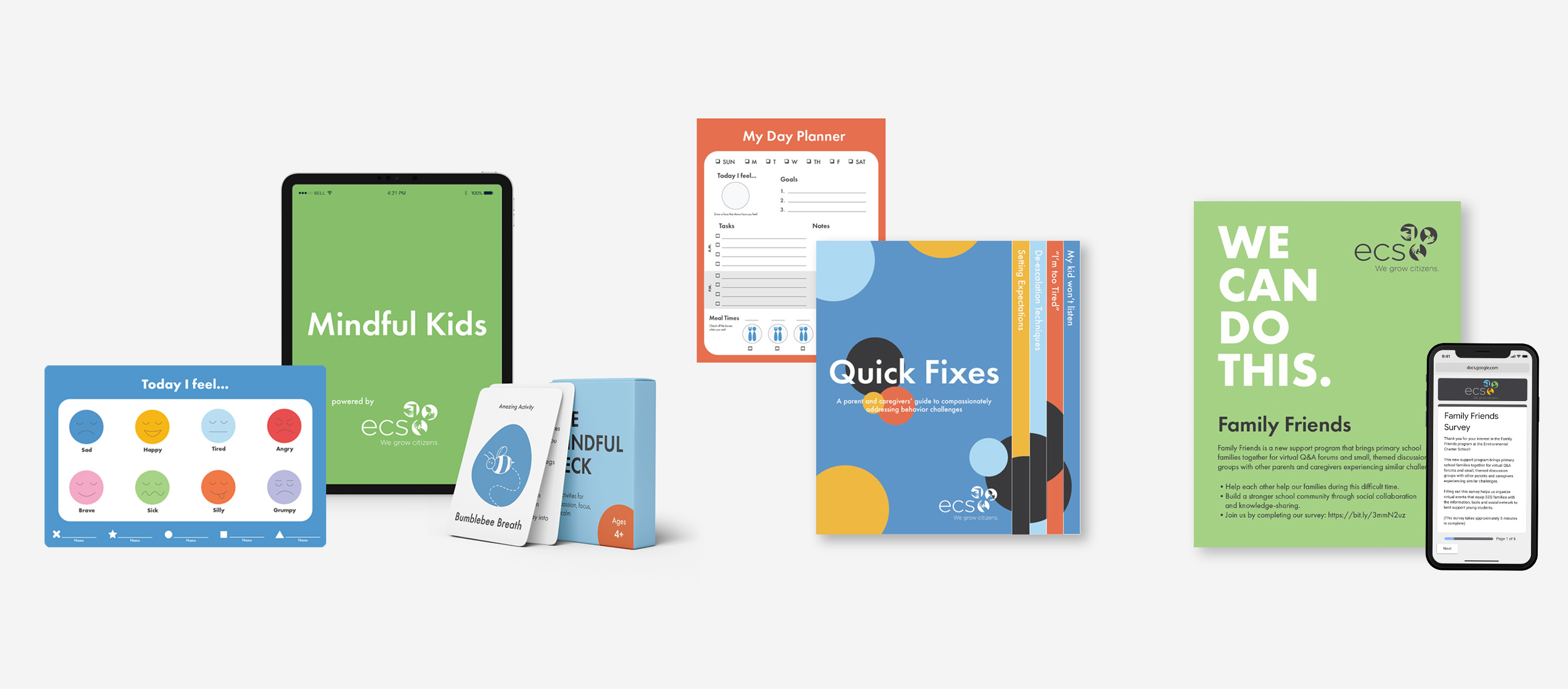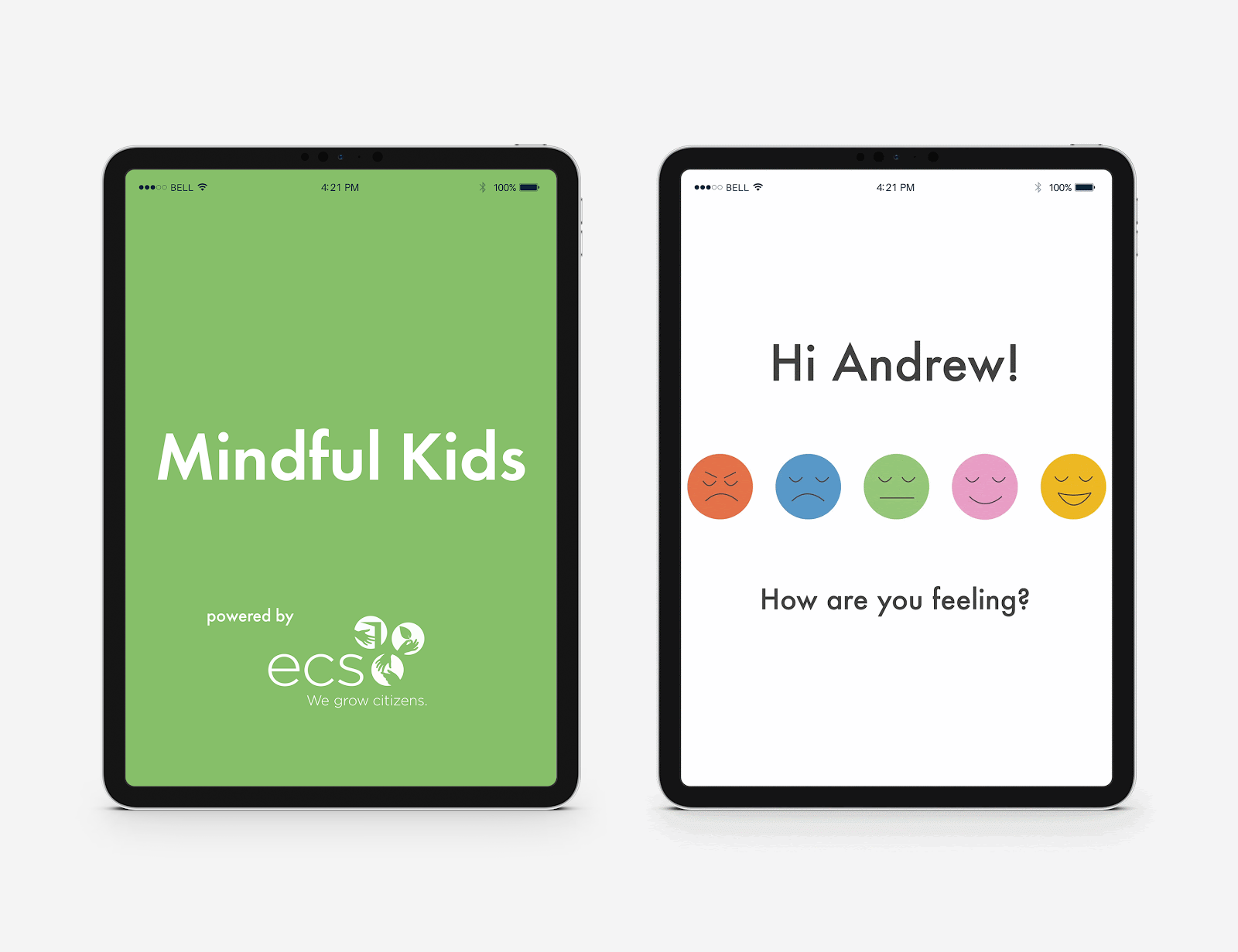Family Wellness Initiative
Helping families cope with the challenges of the pandemic
Introduction
Graduate students from Carnegie Mellon University’s School of Design worked with a charter school in Pittsburgh to help parents and caregivers better understand the school’s pandemic response efforts using visual communication. My team’s strategy involved reframing the problem to address family mental health and stress management to improve communication. We created a three-part system of tools and resources to serve family wellness during this challenging time.
Client
Environmental Charter School ︎︎︎
Pittsburgh, PA
Timeline
5 weeks
Tools
Figma
Illustrator
Photoshop
Google Workspace
Team
Melissa Cagan
Ivar Dameron
Sian Sheu
Environmental Charter School ︎︎︎
Pittsburgh, PA
Timeline
5 weeks
Tools
Figma
Illustrator
Photoshop
Google Workspace
Team
Melissa Cagan
Ivar Dameron
Sian Sheu
Problem Statement
How might we use visual communication design to help the parents and caregivers at Environmental Charter School (ECS) better understand pandemic response efforts from the school?
Research
We kicked off the project with an initial briefing by the ECS administrator, who expressed concern for the school’s frustrated community of families struggling to adapt to virtual home schooling.
Our preliminary research covered a variety of sources from news reports to academic and professional journals, however, the most interesting information came directly from the subjects. Upon reviewing a compilation of parent survey responses provided by the school, it became apparent that stress was an underlying factor in poor communication between the school and the families.
This narrative would be confirmed during our focus group interviews with the parents who discussed at length the challenges of managing home schooling while under the pressures of work, financial problems, and general anxiety about the pandemic.
In between these conversations with the school and the families, my team carried out a series of mapping exercises that helped us organize our observations to identify common themes.
Key insights
Stress is an impediment to effective communication
The relationship between parent-child stress is reciprocal
Concept
We created the “Family Wellness Initiative”, a three-part approach to mitigating family stress within the context of home schooling during the pandemic. Our research indicated that younger students required more support in a virtual learning environment, so we narrowed the scope of our project to K-2 families. Each team member took charge of a component of the project, while maintaining a collaborative and flexible attitude.

Family Wellness Initiative: A three-part solution

Family Friends
I was responsible for developing the third component of the project to build family networks. “Family Friends” is a peer support program for primary school parents and caregivers that’s designed to strengthen the school community through social collaboration and knowledge-sharing.
Throughout our research and interviews, parents and caregivers consistently expressed feeling a loss of school community during the pandemic. Previously, many parents were accustomed to getting important information through informal social interaction with other parents and teachers at the school when they dropped off or picked up their children.
Now the school administration was overwhelmed with parents seeking information and answers that they used to get from their peers. It was important to address the wellness of the parents taking into account the cyclical nature of stress in the household, where children often mirror the distress that they observe around them.


Poster series designed in two colorways
Key features
-
A matching system that brings together families experiencing similar challenges at home and sorts them into small support groups of 3-4 families.
-
Organizing consistent virtual video gatherings that function as an informal meeting place for these matched groups to stop in and briefly talk with the other families, and teachers in a relaxed environment.

Team whiteboarding exercises helped us define our matching criteria.
The matching process for support groups begins with a simple survey. Participants are invited to complete a survey that pinpoints problem areas where the family needs help the most. We ask users to rate a list of pain points in terms of relevance to their family’s priorities and concerns, and the insight gained from this question will help establish the criteria for matching families.
Matching survey





Additional Components
My team members individually focused on the other components of our project including mindfulness activities to help children articulate and cope with their emotions, as well as tools for parents to organize and better manage home schooling and child behavior.






Visual Style
We defined a consistent visual style that was fun, simple and engaging for young children, yet complimentary to the existing logo and branding of the Environmental Charter School.

©2024